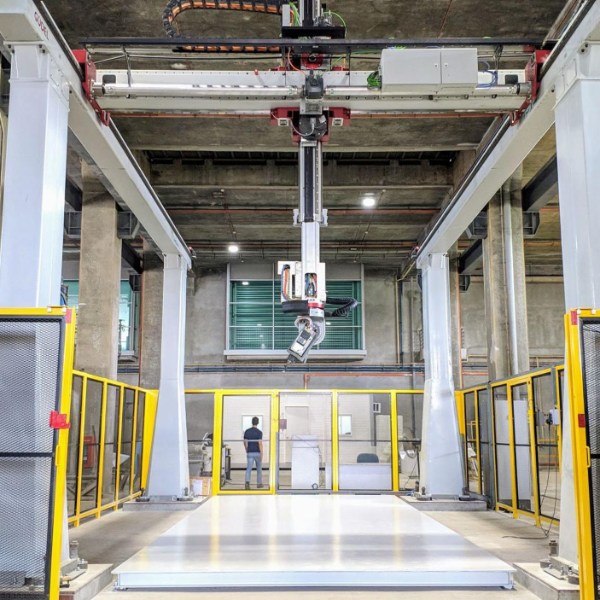3D-concrete printer operational in Singapore

3D-concrete printer operational in Singapore
South-East Asia’s largest 3D-printer for construction is declared operational in Singapore by the Housing and Development Board (HDB) at the PEAK Forum on 11 September 2019. This 3D concrete printer is capable of printing concrete components up to 9 m long, 3.5 m wide and 3.8 m tall. The 3D-printer is developed and operated for HDB by Witteveen+Bos South-East Asia Pte. Ltd. and the overall project is a joint effort of Robin Village Development Pte. Ltd., Nanyang Technological University and Witteveen+Bos.
The 3D-printer and the first fabricated object were visited just over a week ago by the Minster of National Development Mr. Lawrence Wong and the CEO of HDB, Mrs. Cheong-Chua Koon Hean. They were shown a room-sized 3D-printed component of about 11 m2 (3.6 m long x 3 m width x 2.75 m high), produced in 13 printing hours, which was a successful product of the printing trials.
As Singapore’s public housing authority, HDB is responsible for the development of 80 % of the housing in Singapore. There is a great demand for housing and 3D concrete printing could help to speed up the housing development task HDB faces.
Currently, the design and fabrication of concrete building elements using the conventional method of precast production is time-consuming and requires skilled labour. Besides, the used moulds in construction will be discarded, resulting in material wastage. Construction using 3D-printing, on the other hand, combines digital Building Information Modelling (BIM) technology with additive manufacturing techniques to allow free-form construction without the need for moulds or forms, thereby reducing material waste. The method opens up new opportunities for creating geometric forms that would be near impossible to create with traditional methods.
For Witteveen+Bos, this milestone proves the viability of their efforts in the field of 3D-printing for construction. Witteveen+Bos has been working on 3D concrete printing since 2015 as one of the pioneers. As frontrunner, they paved the way for the first 3D-printed pilot projects around the world, such as the first 3D-printed structural bridge and the first liveable 3D-printed houses.